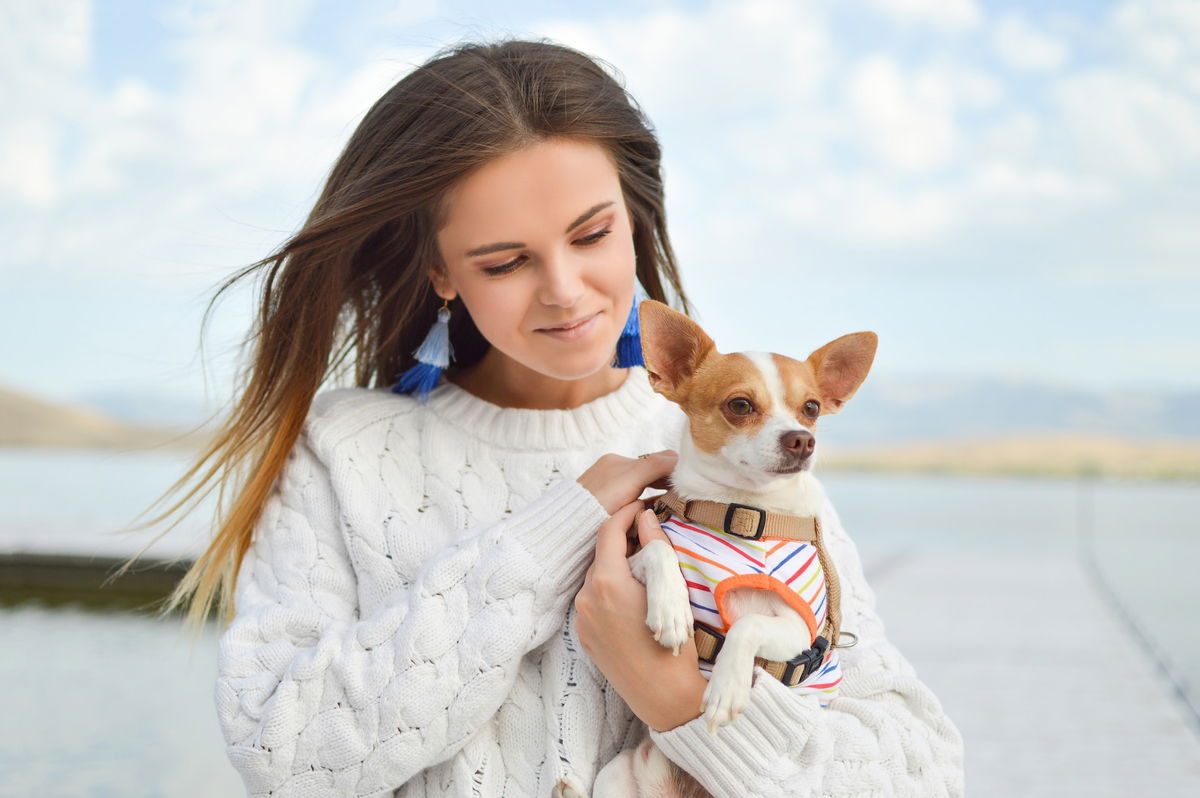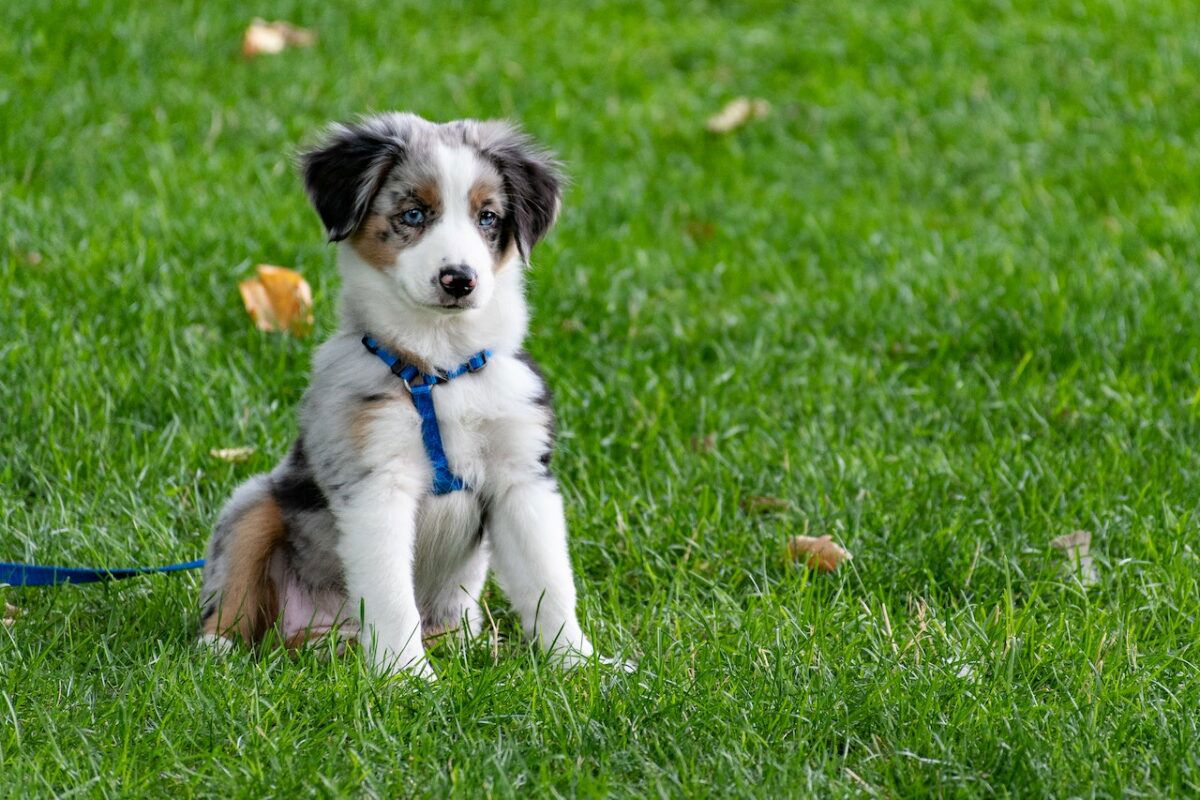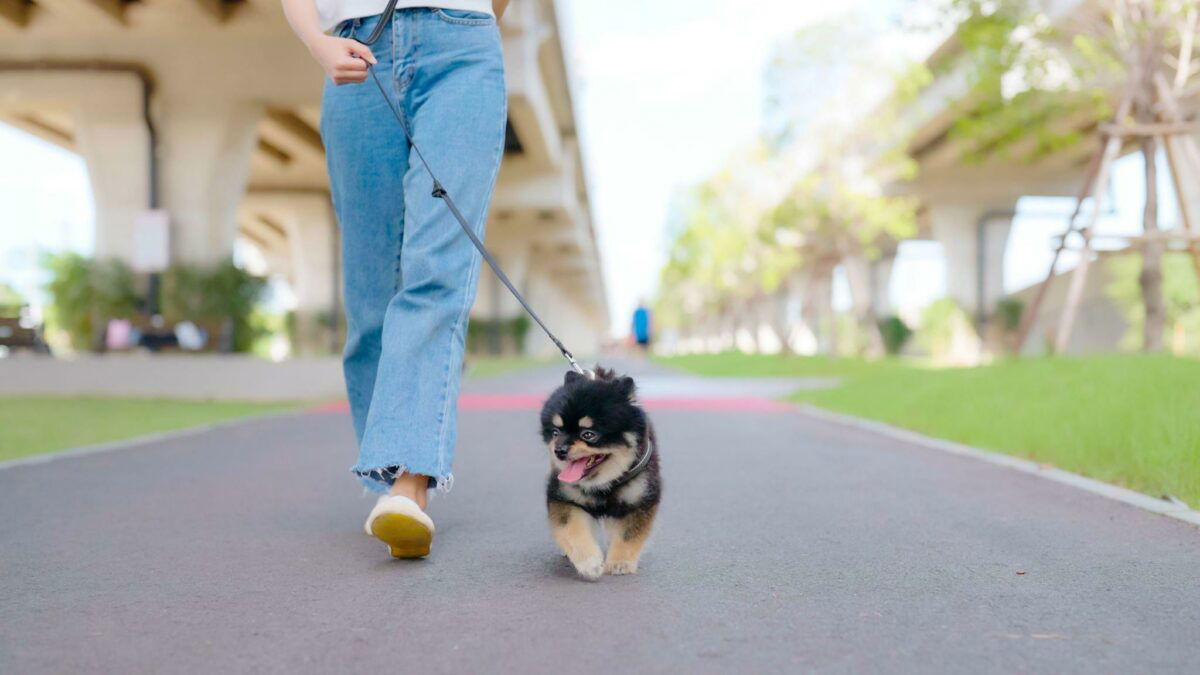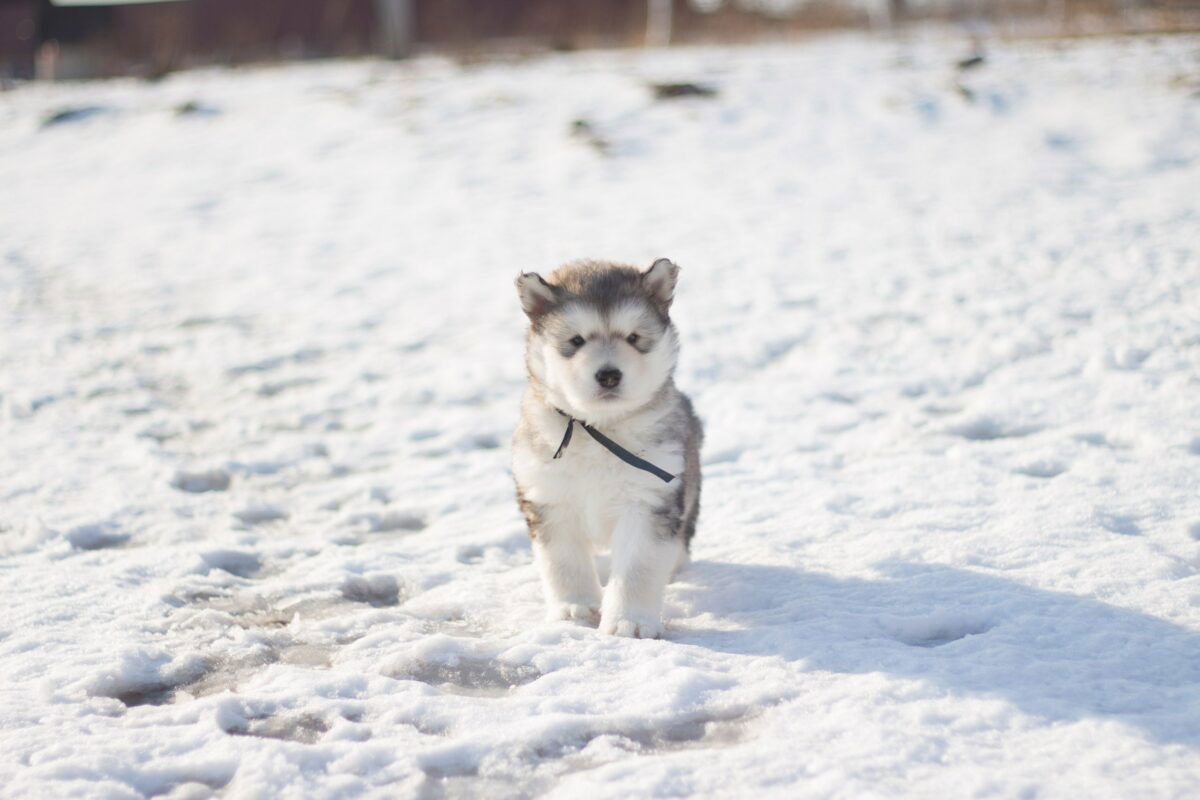We're an affiliate
We hope you love the products we recommend! Just so you know, we may collect a share of sales or other compensation from the links on this page at no additional cost to you. Thank you if you use our links, we really appreciate it!
Introducing and socializing your puppy to the outside environment is extremely important for their growth and development.
We understand the joy of exploring the world with your new puppy, but it should not be that soon. So, when can a puppy go outside?
One of the biggest concerns is that puppies can easily acquire communicable dog diseases when going outside before building a strong immune system.
It’s for this reason that you should wait until your puppy is fully vaccinated before taking them outside.
In this post, we have highlighted everything you need to know about keeping your puppy safe and social without subjecting them to risks in the outdoor environment.
Reasons Why Puppies Can’t Go Outside Before Vaccinations
An unvaccinated pup is always at high risk because they may acquire nasty viruses, bacteria, or parasites by contacting infected surfaces.
Most of these contagious canine illnesses are severe and some of them do not have medical treatment above the need for supportive care.
It’s always a good idea to wait until your puppy has developed a strong immune system before exposing them to the outside environment.

Additionally, puppies who go into public spaces without full vaccination may easily spread diseases to other pets and people, and this may create an outbreak with serious consequences.
Ensuring your young canine friend receives their jab in time will help protect them against a wide range of illnesses with long-term severe effects.
It’s important to speak to your vet about the high-risk factors in your area, and always get your puppy immunized on time.
This will help strengthen their immune system and also in deciding when to take your dog outside for exercises and social training.
How Many Shots Does a Puppy Need to Go Outside?
The timeline and schedule for puppy vaccines may differ by breed, but in general, you should not take your puppy into public spaces about two weeks after completing their primary vaccines.
New-born puppies are prescribed their first shot when they’re between six and nine weeks old.
The second dose can be given between ten and twelve weeks which is a dose against Distemper, Adenovirus, Parvovirus, and Parainfluenza (DAPP).
Most new dog owners adopt their puppies when they’re between eight and twelve weeks old from breeders or shelters.
Make sure to ask about the vaccination schedule of your new puppy and make appointments for the second jab if the breeder has not completed it already.
If you’re in a multi-pet home, or planning to house your puppy in a kennel, your vet will advise you to get them a shot against kennel cough at 14 weeks.
If your puppy gets the last shot at 17 weeks, then they can be considered ‘fully vaccinated’ and therefore safe to go outside 2 weeks after that.
Once your puppy completes their initial set of primary vaccines, they will need yearly booster shots for DAPP or rabies as required by law.
Always work with your vet and ensure the vaccination schedule is up to date.
When Can a Puppy Go Outside for The First Time?
Most puppies complete their core vaccination schedule at about 16 to 20 weeks of age.
Besides the completion of the primary vaccines, it’s important to wait for clearance from your vet before taking the young furry friend to open spaces.
Your vet will examine the puppy and take note of any other issue that might be preventing them from going for outside adventures.

Remember that every dog is an individual and your vet might decide it’s all right for your puppy to go outside after the first round of vaccines which end at around 8 weeks.
You should be in consultation with your vet to determine the best time to take your puppy outside for walks and exercise.
How Do You Introduce a Puppy to The World?
When the time comes to take your puppy outside, you should do it in a controlled way to avoid overwhelming your dog with new spaces.
Start small and gradually work your way up to ensure a safe transition and positive socialization with the environment.
The following are some of the steps you can follow when taking your puppy outside for the first time:
1. First Steps Outside the Home
a. Supervised backyard visits
It’s always a good idea to start with a controlled environment before taking your dog to parks and other social places.
The backyard in your home is a perfect place to start, by exposing your dog to various places and monitoring their interaction with the environment.
Your veterinarian will generally recommend using the yard, on the condition that there hasn’t been a sick dog in the area within the past year.
b. Introduction to different surfaces and textures
You can maximize control by using a leash during this exposure and guiding your puppy to various places for maximum interaction.
Make sure to introduce your puppy to different surfaces and textures encountered in the backyard to get them accustomed to the massive outside world.
Let them sniff or investigate the grass, wooden decks, concrete, or any other surface you have in your backyard area.
By exposing your puppy to different surfaces and textures, you are slowly introducing them to what they can expect to find in public spaces.
2. On-Leash Walks
a. Choosing the right leash and collar/harness
Once your puppy seems confident and well-socialized with everyone at home, it is time to take them out for a further adventure.
But before that, you need to ensure you have the right gear for outdoor activities. This guarantees your dog’s safety in public places.
Make sure to choose the right collar, leash, or harness based on your puppy’s size. The proper accessories should be comfortable for your dog and offer easy control on your part.
A well-fitted collar or harness ensures your puppy cannot slip out or escape during walks. Consider using a harness for puppies with smooth padding for extra comfort.

b. Tips for a positive walking experience
In order to get the most when introducing your puppy to the outside world, you need to make the process exciting and positive as much as possible.
It’s through positive associations that your furry friend will build confidence and reinforce positive behavior in public spaces.
We recommend starting your adventures with short walks around your immediate neighborhood and gradually increasing the distance as your puppy gets comfortable.
Reward them with treats and praises every time they walk quietly by your side and follow commands without pulling or trying to escape.
You need to allow your puppy to explore the sights and sounds of public spaces at their own pace. Do not force them to walk long distances or get them into overwhelming situations.
3. Off-leash Activities and Dog Parks
It’s recommended to start puppy training and socialization as early as possible when the dog is still curious and eager to learn.
This will help them in developing good habits and positive interactions with different people and pets as well.
Social training doesn’t have to be hefty; it can be done in your home or backyard using family members and friends.
Enrolling your young canine in classes can also be a great way of improving their social skills.
Choose puppy classes that require pet parents to show their dog’s vaccination history before enrollment.
This will help reduce the risk of spreading contagious illnesses among the puppies.
a. Ideal age and readiness for off-leash play
The ideal age for taking your dog off-leash or in public parks is variable and it also depends on the individual dog and breed.
Generally speaking, puppies of 4 months and above are well-suited for parks and being around other dogs.
b. Ensuring a safe and controlled environment
It’s paramount for pet owners to consider taking their puppies to dog-friendly parks with enough spaces for play and interaction.
Going to dog-friendly parks safeguards your puppy and allows you to monitor their interactions with other dogs.
Make sure to observe the dog’s behavior, ensuring that they’re comfortable with other pets and intervening in case of aggression or discomfort.
What Are the Outdoor Safety Precautions for Taking a Puppy Outside?
Being a responsible dog owner means that you are aware of all the potential hazards exposed to your puppy in outside environments.
You should therefore take the necessary precautions to ensure your puppy remains safe during their time in public.
The following are some of the things you need to keep in mind:
1. Parasite Prevention
a. Fleas and Ticks
Infestation by fleas, lice, and ticks is one of the most common problems that cause discomfort in dogs and sometimes lead to the spread of diseases.
You should always inspect your puppy’s coat to ensure they do not have a parasite attack.
Regular brushing and bathing are some of the things you can do to control external parasites and improve your dog’s health.
If your furry friend is infested with external parasites, we suggest using vet-approved products to reduce the footprint of fleas, lice, and ticks.
b. Intestinal parasites
Puppies are particularly prone to intestinal parasites because of their insatiable eating habits.
Taking your pooch for walks in the park can be a challenging situation because they may encounter dog feces, and this exposes them to intestinal parasites.
Puppies who eat feces will continually infect themselves with intestinal parasites making it harder to curb the problems.
If your puppy loves snacking these forbidden goods, it’s important to take them for fecal checks at the vet for diagnosis of intestinal health.
Your vet may also recommend regular deworming to counter the growing population of parasites in the GI tract.
Make sure to carry enough poo bags when taking your dog out for adventures. This makes it easy to pick after your dog’s messes and prevents them from sniffing what they left behind.
2. Weather Conditions
a. Temperature extremes
It’s not recommended to take your puppy outside during extremely hot temperatures. The heated pavements may burn your puppy’s paw pads and cause possible injuries.
A combination of too much heat and vigorous exercises can cause your dog to get heatstroke, with the initial symptoms being heavy panting and difficulty breathing.
During the summertime, we suggest taking your pup out in the early mornings or late evenings when the weather condition is bearable.
b. Rain, snow, and other inclement weather
The other extreme occurs during the winter when your puppy is subjected to unforgiving cold and snowy conditions.

It’s important to keep your puppy indoors during such inclement weather conditions to avoid possible health issues.
If you must take your puppy out, we suggest putting on dog sweaters and boots to prevent their delicate coats/paws from the extremities of winter.
3. Controlling Exposure to Potential Hazards
a. Toxic plants and substances
During outdoor activities, your dog is continually exposed to potential hazards including toxic plants growing on lawns and other substances.
As a responsible dog owner, you should familiarize yourself with all the dog-toxic plants and identify those that grow within your area.
Stay on the lookout when your puppy sniffs or nibbles items collected from the ground and be ready to distinguish between the safe plants and the toxic ones.
b. Unfamiliar animals and aggressive dogs
You will most probably come across other pet parents walking their dogs while making rounds in the neighborhood with your pup.
Treat confrontative dogs as aggressive and never allow your puppy to get into confrontations with other pets along the way.
It’s for this reason that you should always have your puppy on a harness and strong leash when taking them around public places.
Frequently Asked Questions (FAQs)
1. When can I take my puppy for a walk?
As a general rule, you should take your puppy out only when they’ve completed their primary vaccination, which usually occurs between 16 to 20 weeks.
Puppies have weak immunity against diseases, and it is helpful to wait until they get fully vaccinated before exposing them to the outside world.
2. When can puppies go outside to potty?
Puppies will typically be ready to go outside for potty as soon as they have enough bladder control. At about 12 to 16 weeks, most puppies can be ready to eliminate outdoors.
It’s important to start potty-training your puppy a few days after adoption to instill good behavior and hygiene.
3. Can I carry my puppy outside before vaccinations?
While it may be tempting to carry your puppy outside before full vaccination, most vets would recommend against doing so because of the risks involved.
We suggest using in-house puppy pee pads during the vaccination period to limit the risk of contracting viruses and parasites from the outside environment.
If you have to take your puppy outside before vaccinations for unavoidable reasons, just make sure they don’t walk on the ground and ensure they don’t make contact with other dogs.
Conclusion
Taking your puppy outside for potty breaks, socialization, walks, and daily exercises are important aspects of their health.
However, puppies should never be taken outside until they’re fully vaccinated against common contagious canine viruses.
Most puppies complete their primary jabs at around 16 weeks, and vets recommend allowing your puppy about 2 weeks after the shots for them to build a strong immune system.
Once your young canine friend is ready for their first outdoor adventures, we recommend introducing them slowly to the world starting with a controlled space such as the backyard.
Laura is the founder of Furs'n'Paws. She is a also a pet writer and expert with more than 20 years of experience of working with dogs and cats. She developed a very strong love for animals at a young age. Her passion led her to establish a thriving pet sitting and dog walking business in Dubai. As an expert in pet training, behavior, and nutrition, Laura is committed to helping pet owners and pet lovers by offering high-quality information on a wide range of topics.



No responses yet